The BMW X5 and the Volvo XC90 are two of the most sought-after luxury SUVs, combining performance, comfort, and cutting-edge technology. While each vehicle has its unique strengths, this comparison will highlight their technical aspects, innovations, and overall appeal.
BMW X5 vs Volvo XC90 – Which car suits you better?
Compare performance, boot capacity, efficiency and price at a glance.
Find out which car is the better choice for you – BMW X5 or Volvo XC90?
Performance and Powertrain
The BMW X5 offers a diverse range of engine options, including Diesel MHEV, Petrol MHEV, and Plugin Hybrid variants. Power outputs kick off at 298 HP and soar up to a staggering 625 HP in the high-performance model. The 0-100 km/h acceleration times span from a brisk 6.1 seconds to a blistering 3.9 seconds, demonstrating the X5's capability to deliver thrilling performance.
In comparison, the Volvo XC90 features a more streamlined engine lineup with Petrol MHEV and Plugin Hybrid options. Its power ranges from 250 HP to 455 HP, with a respectable acceleration of 7.7 seconds for the base model and 5.4 seconds for the high-end variant. While the XC90 may not achieve the power metrics of the X5, it still offers a satisfying driving experience.
Fuel Efficiency and Environmental Impact
When it comes to efficiency, the BMW X5 showcases notable figures, especially in its hybrid configurations, with consumption figures as low as 0.9 L/100 km. The diesel variant also maintains a solid economy at 7.4 L/100 km. With an electric range of up to 97 km thanks to a battery capacity of 25.7 kWh, it caters well to eco-conscious drivers.
The Volvo XC90 also performs admirably in this category, especially with its Plugin Hybrid, boasting consumption figures as low as 1.2 L/100 km and an electric range of 71 km with a smaller 14.7 kWh battery. Both manufacturers have been mindful of their carbon footprint, with CO2 emissions for the XC90 ranging between 30 to 191 g/km and the X5 ranging from 194 to 291 g/km.
Interior Comfort and Space
The BMW X5 comfortably seats five and offers a generous trunk capacity of 650 liters. Its interior is a blend of luxury and technology, featuring high-grade materials, an intuitive infotainment system, and adjustable seating arrangements. With dimensions measuring 4935 mm in length and 2004 mm in width, the X5 provides ample room for passengers and luggage alike.
On the other hand, the Volvo XC90 is designed to accommodate seven passengers, catering to families looking for versatility. Despite its slightly smaller trunk space of 302 liters, the XC90 excels in overall cabin quality and user-friendly technology. It measures 4953 mm in length and 1923 mm in width, providing a spacious and comfortable environment for all occupants.
Innovative Features and Technologies
The BMW X5 is laden with modern tech, including advanced driver-assistance systems, adaptive cruise control, and a spacious head-up display that enhances safety and driving convenience. Additionally, the latest X5 integrates connectivity features supporting smartphones and a premium audio system for superior sound quality.
The Volvo XC90 is also equipped with innovative safety features, including Volvo's signature Pilot Assist, which provides semi-autonomous driving capabilities. Its Infotainment system operates on Android-based software, offering seamless integration with Google services and a user-friendly interface. The XC90 takes pride in its commitment to safety and practicality, making it a family favorite.
Conclusion: Which SUV Reigns Supreme?
Choosing between the BMW X5 and the Volvo XC90 ultimately boils down to personal preference and priorities. The X5 stands out for its exhilarating performance and luxury finish, making it an excellent choice for those who seek sports SUV dynamics. Conversely, the XC90 shines with its family-oriented features, superior interior space, and strong focus on safety.
Both SUVs represent the pinnacle of modern automotive engineering, offering a wealth of technology and performance. In the end, your choice will depend on whether you prioritize agility and power over space and safety, but either way, you will be making an excellent investment in luxury and performance.
Here’s where it gets real: The technical differences in detail
Costs and Efficiency:
Price and efficiency are key factors when choosing a car – and this is often where the real differences emerge.
Volvo XC90 has a slightly advantage in terms of price – it starts at 69800 £, while the BMW X5 costs 77100 £. That’s a price difference of around 7295 £.
Fuel consumption also shows a difference: BMW X5 manages with 3 L and is therefore slightly more efficient than the Volvo XC90 with 3.50 L. The difference is about 0.50 L per 100 km.
As for range, the BMW X5 performs evident better – achieving up to 105 km, about 34 km more than the Volvo XC90.
Engine and Performance:
Power, torque and acceleration say a lot about how a car feels on the road. This is where you see which model delivers more driving dynamics.
When it comes to engine power, the BMW X5 has a distinct edge – offering 625 HP compared to 455 HP. That’s roughly 170 HP more horsepower.
In acceleration from 0 to 100 km/h, the BMW X5 is evident quicker – completing the sprint in 3.90 s, while the Volvo XC90 takes 5.40 s. That’s about 1.50 s faster.
In terms of top speed, the BMW X5 performs clearly perceptible better – reaching 250 km/h, while the Volvo XC90 tops out at 180 km/h. The difference is around 70 km/h.
There’s also a difference in torque: BMW X5 pulls hardly perceptible stronger with 750 Nm compared to 709 Nm. That’s about 41 Nm difference.
Space and Everyday Use:
Beyond pure performance, interior space and usability matter most in daily life. This is where you see which car is more practical and versatile.
Seats: Volvo XC90 offers distinct more seating capacity – 7 vs 5.
In curb weight, Volvo XC90 is minimal lighter – 2080 kg compared to 2240 kg. The difference is around 160 kg.
In terms of boot space, the BMW X5 offers convincingly more room – 650 L compared to 302 L. That’s a difference of about 348 L.
In maximum load capacity, the BMW X5 performs barely noticeable better – up to 1870 L, which is about 14 L more than the Volvo XC90.
When it comes to payload, Volvo XC90 hardly perceptible takes the win – 710 kg compared to 705 kg. That’s a difference of about 5 kg.
Who comes out on top?
Overall, the BMW X5 shows itself to be outperforms in nearly all aspects and secures the title of DriveDuel Champion.
It convinces with the more balanced overall package and proves to be the more versatile choice for everyday use.
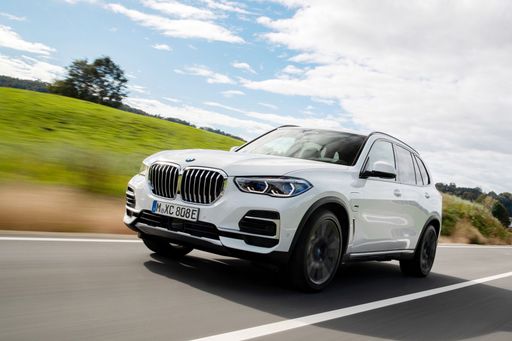 @ BMW Group Press
@ BMW Group Press
BMW X5
BMW X5
The BMW X5 blends athletic handling with a roomy, premium interior, feeling equally at home on twisty country roads and the school-run car park. Its executive-lounge cabin and confident road presence make it a tempting choice for buyers who want comfort, capability and just a little bit of bragging rights.
details @ BMW Group Press
@ BMW Group Press
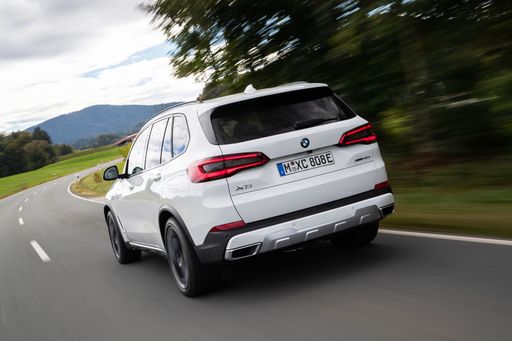 @ BMW Group Press
@ BMW Group Press
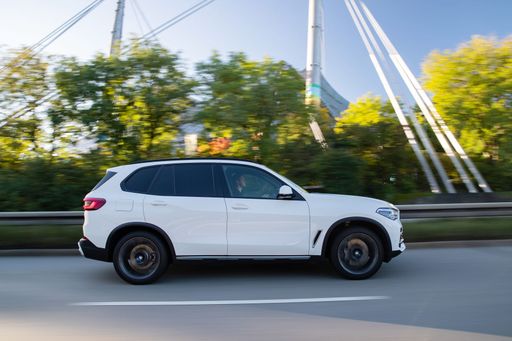 @ BMW Group Press
@ BMW Group Press
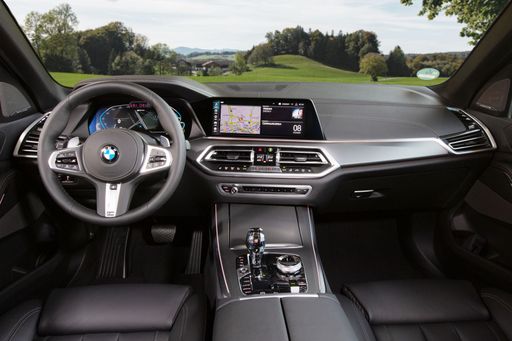 @ BMW Group Press
@ BMW Group Press
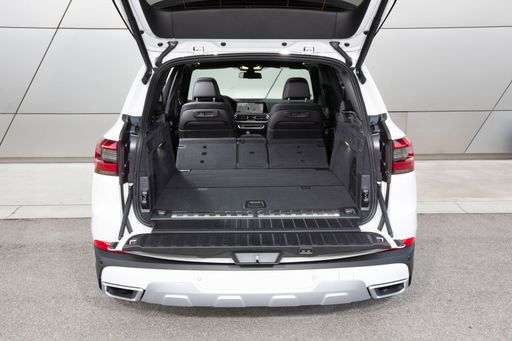 @ BMW Group Press
@ BMW Group Press
Volvo XC90
The Volvo XC90 is a serene Scandinavian SUV that mixes minimalist luxury with a composed, confidence-inspiring presence — ideal for buyers who want family practicality without sacrificing style. Inside it serves up a calm, well-crafted cabin and user-friendly tech that keeps long journeys pleasant and tantrums to a minimum, making the XC90 a smart, stylish pick for sensible drivers.
details @ Volvo Cars
@ Volvo Cars
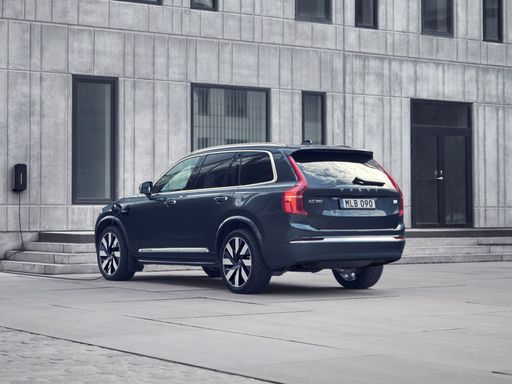 @ Volvo Cars
@ Volvo Cars
 @ Volvo Cars
@ Volvo Cars
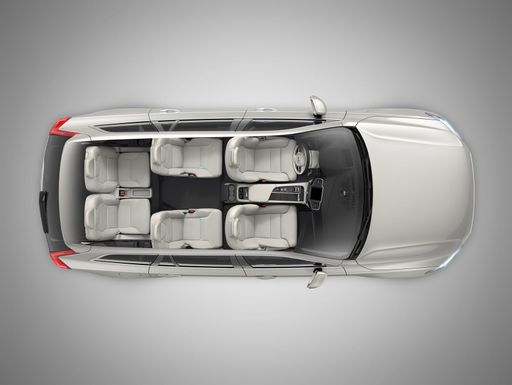 @ Volvo Cars
@ Volvo Cars
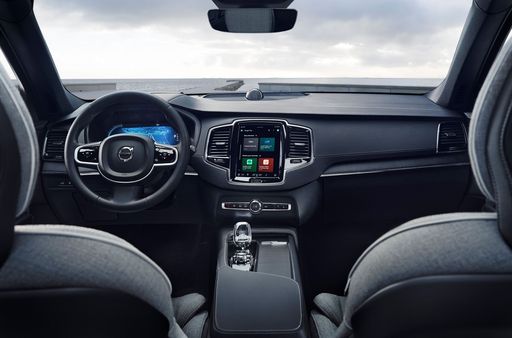 @ Volvo Cars
@ Volvo Cars
 @ BMW Group Press
@ BMW Group Press
|
 @ Volvo Cars
@ Volvo Cars
|
|
|
|
Costs and Consumption |
|
|---|---|
|
Price
77100 - 143500 £
|
Price
69800 - 84600 £
|
|
Consumption L/100km
3 - 12.8 L
|
Consumption L/100km
3.5 - 8.5 L
|
|
Consumption kWh/100km
-
|
Consumption kWh/100km
-
|
|
Electric Range
105 km
|
Electric Range
71 km
|
|
Battery Capacity
25.70 kWh
|
Battery Capacity
14.70 kWh
|
|
co2
68 - 289 g/km
|
co2
79 - 191 g/km
|
|
Fuel tank capacity
69 - 83 L
|
Fuel tank capacity
71 L
|
Dimensions and Body |
|
|---|---|
|
Body Type
SUV
|
Body Type
SUV
|
|
Seats
5
|
Seats
7
|
|
Doors
5
|
Doors
5
|
|
Curb weight
2240 - 2495 kg
|
Curb weight
2080 - 2297 kg
|
|
Trunk capacity
500 - 650 L
|
Trunk capacity
262 - 302 L
|
|
Length
4935 - 4948 mm
|
Length
4953 mm
|
|
Width
2004 - 2015 mm
|
Width
1923 mm
|
|
Height
1755 - 1765 mm
|
Height
1771 mm
|
|
Max trunk capacity
1720 - 1870 L
|
Max trunk capacity
1816 - 1856 L
|
|
Payload
565 - 705 kg
|
Payload
653 - 710 kg
|
Engine and Performance |
|
|---|---|
|
Engine Type
Petrol MHEV, Diesel MHEV, Plugin Hybrid
|
Engine Type
Petrol MHEV, Plugin Hybrid
|
|
Transmission
Automatic
|
Transmission
Automatic
|
|
Transmission Detail
Automatic Gearbox
|
Transmission Detail
Automatic Gearbox
|
|
Drive Type
All-Wheel Drive
|
Drive Type
All-Wheel Drive
|
|
Power HP
298 - 625 HP
|
Power HP
250 - 455 HP
|
|
Acceleration 0-100km/h
3.9 - 6.1 s
|
Acceleration 0-100km/h
5.4 - 7.7 s
|
|
Max Speed
233 - 250 km/h
|
Max Speed
180 km/h
|
|
Torque
540 - 750 Nm
|
Torque
360 - 709 Nm
|
|
Number of Cylinders
6 - 8
|
Number of Cylinders
4
|
|
Power kW
219 - 460 kW
|
Power kW
184 - 335 kW
|
|
Engine capacity
2993 - 4395 cm3
|
Engine capacity
1969 cm3
|
General |
|
|---|---|
|
Model Year
2025
|
Model Year
2024 - 2025
|
|
CO2 Efficiency Class
G, B
|
CO2 Efficiency Class
G, B
|
|
Brand
BMW
|
Brand
Volvo
|
Is the BMW X5 offered with different drivetrains?
The BMW X5 is available as All-Wheel Drive.
The prices and data displayed are estimates based on German list prices and may vary by country. This information is not legally binding.
